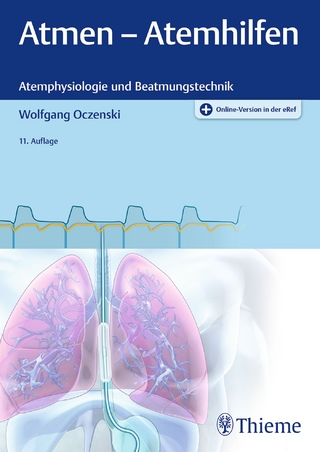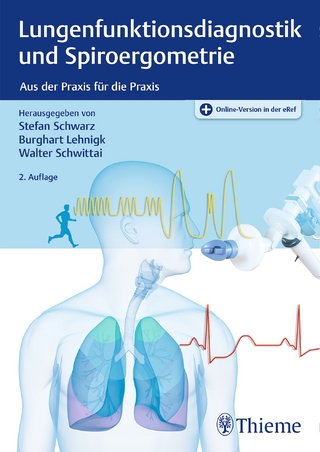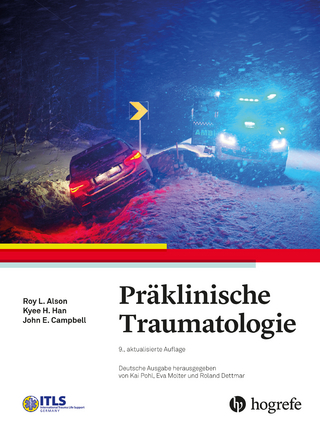
Human Respiration
WIT Press (Verlag)
978-1-85312-944-5 (ISBN)
Even in ancient times, breathing was believed to be the most important feature of life itself. The very Universe was viewed as a huge breathing organism, within which every part was related to everything else through a process of vibration - or breath. Nowadays, our understanding of the laws governing the Universe and life has advanced tremendously. Yet this has not changed our perception of breathing as one of the most important mechanisms of life support. Books on human respiration are usually written either only by physicians or engineers. This book became possible as a result of a decade of research collaboration between physicians, engineers, physicists and applied mathematicians. Consequently, this volume presents the latest developments and major challenges in the area of biomedical engineering concerned with studies of the human respiratory system. The contributors cover the anatomy and physiology of human respiration, some of the newest macro- and microscopic models of the respiratory system, numerical simulation and computer visualisation of gas transport phenomena, and applications of these models to medical diagnostics, treatment and safety.
Chapter 1:Anatomy and physiology of the human respiratory system Postnatal growth and development; Conducting airways structure and function; Mechanisms of gas exchange; Pulmonary circulation; Respiratory muscles Chapter 2: Fundamentals of alveolar gas diffusion: mathematical modeling and visualization Human respiratory system; Impact of microscopic solid particles on the alveolar diffusion; Visualization of the results Chapter 3: Lung gas composition and transfer analysis: O2 and CO2 diffusion coefficients and metabolic rates Introduction; Lung-air composition analysis (and O2 consumption and CO2 production rates); Lung gas-exchange model and parametric analysis; Case studies Chapter 4: Lung ventilation modeling and assessment Introduction; Lung ventilation performance using a linear first-order model; Ventilatory Index; Variations in R and C during a respiratory cycle (towards nonlinear); Work of breathing (WOB); Second-order model for single-compartment lung model; Two-compartmental linear model Chapter 5: Modeling of two-phase flow in the human respiratory system Introduction; Methodology; Results; Discussions; Conclusions Chapter 6: Quantification of human physiological response to toxic substances Introduction; Preliminary considerations; Basic definitions and the scale of capability; Conclusions Chapter 7: Anatomically based modeling of pulmonary structure Introduction; Finite-element models of the human lung lobes; Finite-element models of the conducting airways; Modeling the respiratory airways as a volume-filling mesh; Modeling the microcirculation as a segmented network; Summary Chapter 8: Applied chest-wall vibration therapy for patients with obstructive lung disease Introduction; Experimental methodology; Theoretical considerations based on guidelines for HFCCT; Results and discussions; Concluding remarks Chapter 9: Indicator for lung status in a mechanically ventilated COPD patient using lung-ventilation modeling and assessment Introduction; Methodology; Lung-ventilation model; Determining lung compliance (Ca) and air-flow resistance (Ra); Formulating a lung-ventilatory index (LVI); Assessing lung-improvement index (LII) and rate of lung improvement (k); Conclusion Chapter 10: Mechanics of proportional-assist ventilation Introduction; Development of proportional-assist ventilation; Theory of proportional-assist ventilation; Proportional solenoid valve PAV system; Experimental results and discussion; Conclusions
| Erscheint lt. Verlag | 10.5.2006 |
|---|---|
| Reihe/Serie | Advances in Bioengineering S. ; No. 3 |
| Zusatzinfo | Illustrations |
| Verlagsort | Southampton |
| Sprache | englisch |
| Maße | 155 x 230 mm |
| Themenwelt | Medizinische Fachgebiete ► Innere Medizin ► Pneumologie |
| Studium ► 1. Studienabschnitt (Vorklinik) ► Anatomie / Neuroanatomie | |
| Studium ► 1. Studienabschnitt (Vorklinik) ► Physiologie | |
| ISBN-10 | 1-85312-944-5 / 1853129445 |
| ISBN-13 | 978-1-85312-944-5 / 9781853129445 |
| Zustand | Neuware |
| Haben Sie eine Frage zum Produkt? |
aus dem Bereich


